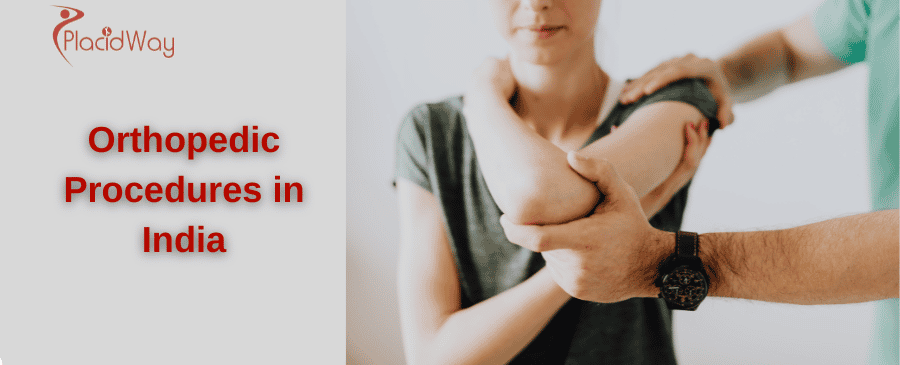Why Patients Choose India for World-Class, Affordable Orthopedic Surgery

Living with chronic joint pain or a debilitating orthopedic injury can be a daily struggle, a challenge often made worse by the prospect of long waiting lists and staggering surgical costs in Western countries. For millions, this has led to a search for a better alternative, a quest that increasingly ends in one destination. This prompts the question: "What makes India medical tourism attractive for orthopedic procedures?" The answer is a compelling narrative of value, where world-class quality and cutting-edge technology are delivered at a fraction of the cost.
India has strategically positioned itself as a global healthcare powerhouse, and its orthopedic sector is a shining example of this success. The country's "attractiveness" isn't built on a single factor, but on four powerful pillars. First is the dramatic cost savings, which allow patients to access procedures like knee or hip replacements for less than the cost of their insurance deductible back home. Second is the exceptional quality of its surgeons, many of whom are US or UK board-certified and have extensive international training and experience. Third is the widespread availability of advanced technology, including robotic-assisted surgery systems that improve precision and speed up recovery. Finally, this all takes place in modern, JCI-accredited hospitals—the global gold standard for patient safety—with immediate availability, eliminating the agonizing wait times common elsewhere.
This comprehensive guide will explore each of these factors in detail. We will break down the costs for the most common orthopedic surgeries, explain the high standards of Indian surgeons and hospitals, and delve into the technology that is transforming patient outcomes. By understanding these key advantages, you will see why India is not just an alternative, but a premier choice for your orthopedic journey.
What makes India medical tourism attractive for orthopedic procedures?
Patients who choose India for procedures like knee replacement, hip replacement, or spine surgery do so because the value proposition is unmatched. They receive a level of care and technology that is equivalent or superior to what they would get at home, for a price that is dramatically lower. This is not about "cheap" healthcare; it's about cost-effective, high-quality healthcare.
The entire medical tourism infrastructure is designed for international patients. Major hospital groups like Apollo, Fortis, and Max Healthcare have dedicated international patient departments that manage everything from the initial online consultation to post-operative care, ensuring a seamless and comfortable experience. The widespread use of English among medical staff further removes any communication barriers, making the journey smooth and stress-free.
How significant are the cost savings?
This financial relief is life-changing for many. It allows patients to move forward with necessary surgeries without draining their life savings or going into debt. The lower costs are a result of India's different economic structure, lower overheads, and the ability to source high-quality pharmaceuticals and implants at a lower cost—not a compromise on quality.
Here’s a comparison of typical costs for major orthopedic procedures:
| Procedure | Average Cost in India (USD) | Average Cost in the USA (USD) |
|---|---|---|
| Total Knee Replacement (TKR) | $4,500 - $7,000 | $40,000 - $55,000 |
| Total Hip Replacement (THR) | $5,000 - $8,000 | $45,000 - $60,000 |
| ACL Reconstruction | $3,000 - $5,000 | $20,000 - $30,000 |
| Spinal Fusion Surgery (per level) | $6,000 - $9,000 | $50,000 - $100,000+ |
Are the orthopedic surgeons in India highly qualified?
The quality and experience of Indian surgeons are a cornerstone of the country's medical tourism success. The best surgeons at major corporate hospitals have impressive credentials and a vast amount of experience due to the high volume of procedures they perform. It is not uncommon for a senior Indian joint replacement surgeon to have performed thousands of successful surgeries, a level of experience that is hard to match.
When researching a surgeon, you will often find that they are members of prestigious organizations such as the American Academy of Orthopaedic Surgeons (AAOS) or the Royal College of Surgeons (RCS) in the UK, in addition to being certified by the Indian Orthopaedic Association.
What is the quality of hospitals and technology?
The Joint Commission International (JCI) accreditation is a critical indicator of quality. It means the hospital has been audited and found to meet the highest international standards for patient safety, surgical protocols, and quality of care. India has one of the highest numbers of JCI-accredited hospitals in the world.
The availability of robotic surgery is another major attraction. Systems like the Mako Robotic-Arm Assisted Surgery allow surgeons to create a personalized 3D plan and place implants with a level of precision that is difficult to achieve with manual techniques. For patients, this can mean better implant alignment, a more natural-feeling joint, and often a faster recovery.
Is the quality of orthopedic implants the same as in the West?
This is a crucial point of reassurance for patients. You are not receiving a generic or lower-quality implant. You are receiving the same high-performance, clinically proven knee or hip prosthesis that a surgeon in New York or London would use. Because India is a major market, these global companies have a strong presence there. The hospitals' high volume allows them to negotiate excellent prices for these premium implants, a saving that is passed on to the patient.
Is there a long waiting time for surgery in India?
This is a stark contrast to the situation in countries with public healthcare systems like the UK or Canada, where patients can wait for 12 to 18 months or even longer for a hip or knee replacement. This ability to get immediate treatment is not just a matter of convenience; it's a crucial health benefit. It allows patients to resolve their pain and mobility issues quickly, preventing further deterioration of their condition and allowing them to return to an active life sooner.
What does an orthopedic surgery package in India typically include?
The goal is to provide a clear, upfront cost for the entire medical portion of the journey. The main costs that are typically not included in the surgical package are:
- Round-trip airfare.
- Accommodation before and after the hospital stay.
- The cost of any long-term physical therapy required after returning home.
Even after factoring in these additional travel costs, the total expenditure remains a fraction of the cost of the surgery alone in the US.
India's unique combination of massive affordability, world-class surgical talent, cutting-edge technology, and patient-centered service makes it a powerfully attractive choice for orthopedic care. To begin your journey and get personalized quotes from internationally accredited hospitals and leading surgeons in India, explore the options on PlacidWay.


.png)














Share this listing